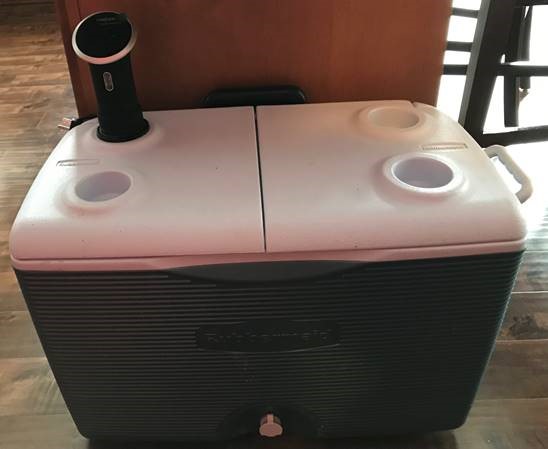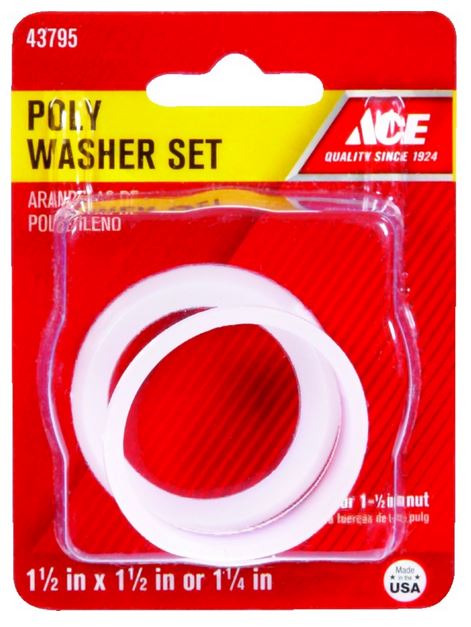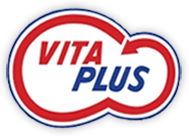
Build Your Own Colostrum Thawing and Heating Unit
Posted on May 27, 2020 in Starting Strong - Calf Care
Refrigerating or freezing excess high-quality colostrum (greater than 22% Brix reading) is a great way to ensure each newborn calf receives this vital nutrition at birth. Because high temperatures can destroy immunoglobulins (IgGs) and other nutrients, colostrum should be carefully thawed and warmed before feeding it to the calf. Producers can easily build their own colostrum thawing and heating unit to accomplish this task.
Materials needed
 50-quart cooler with cup holders on the lid: A cooler with a split lid (as shown in the first photo to the right) makes for easier access without having to disturb the heating unit. If you will use the unit to warm calf bottles, choose a cooler tall enough for the bottles to fit upright.
50-quart cooler with cup holders on the lid: A cooler with a split lid (as shown in the first photo to the right) makes for easier access without having to disturb the heating unit. If you will use the unit to warm calf bottles, choose a cooler tall enough for the bottles to fit upright.- Sous vide/immersion cooker (such as this cooker)
 1.5-inch poly washer (second photo to the right)
1.5-inch poly washer (second photo to the right)- Caulk or other waterproof sealant
- Kitchen cooling rack
To build
- Carefully cut out the bottom of one of the cup holders on the lid.
- Place the cooker into the cup holder. Use the washers to create a seal between the cup holder and the cooker. Use caulk to seal it in place.
- Place a kitchen cooling rack at the bottom of the cooler to allow water to completely circulate around the colostrum bag or bottle.
To use
- Carefully fill the cooler with water, being mindful of water displacement. You need enough water to cover the cooker’s heating element, but the water level should not rise above the cooker’s max fill line. Watch the water level closely as you add the colostrum bag or bottle.
- Secure the bag or bottle so that it does not make direct contact with the cooker.
- To thaw frozen colostrum: Set the heater between 120 to 125 degrees F. Place the frozen package of colostrum in the water. It takes approximately 30 minutes to thaw the colostrum and warm it to ideal feeding temperature (105 degrees F).
- To warm refrigerated colostrum: Set the heater between 105 to 110 degrees F. It takes approximately 15 to 20 minutes to reach this temperature. In the winter, you may need to increase the temperature to between 110 to 115 degrees F, depending on how long it will take you to get it to the calf (the ideal feeding temperature is 105 degrees F).
To clean
- The water can be reused for four to seven days, depending on use. You may add 1 cup of vinegar to the water bath to eliminate scum buildup as the water sits for a few days.
- Clean the unit once or twice a week (or more often if needed) by dumping out the water and disinfecting the entire unit.
| Category: |
Colostrum management Equipment Starting Strong - Calf Care |

